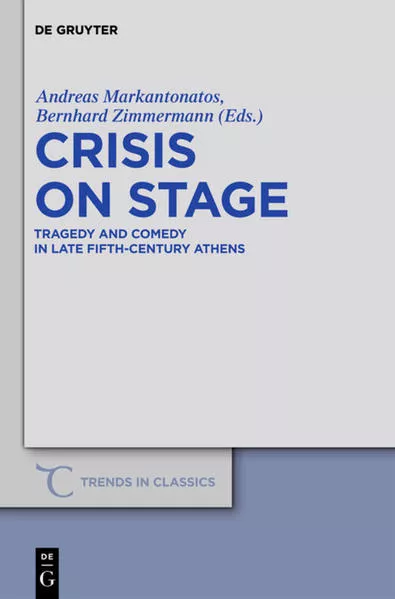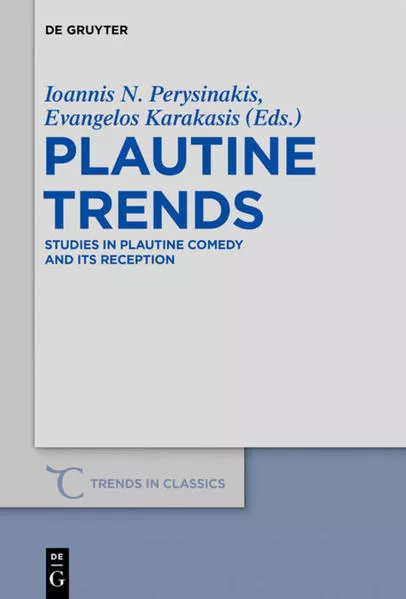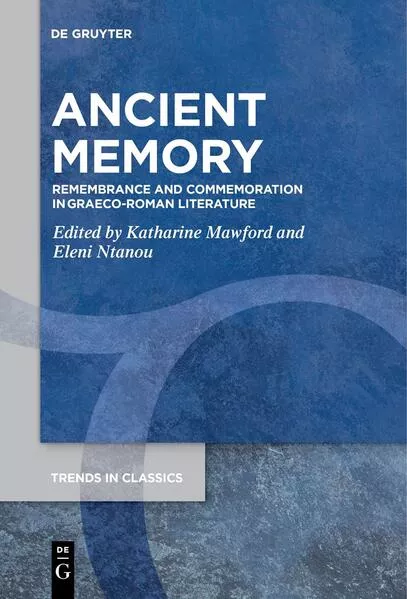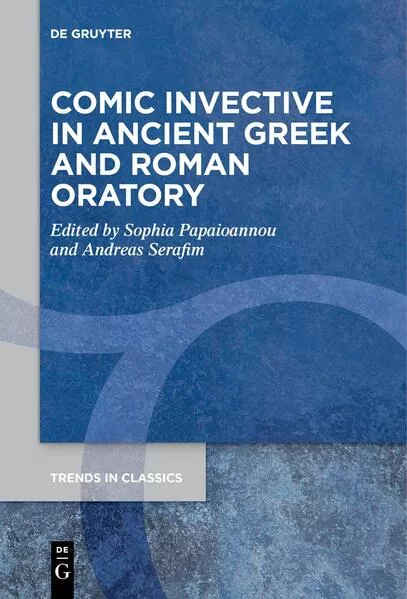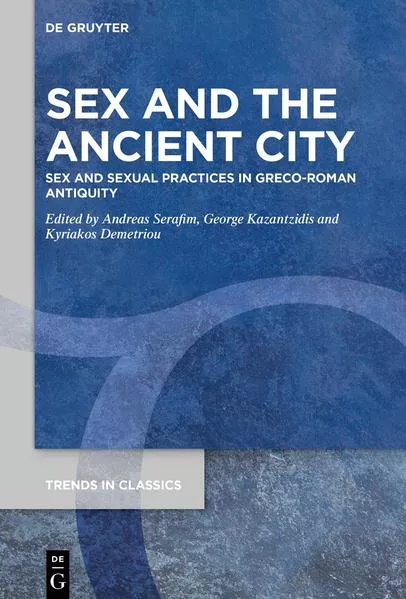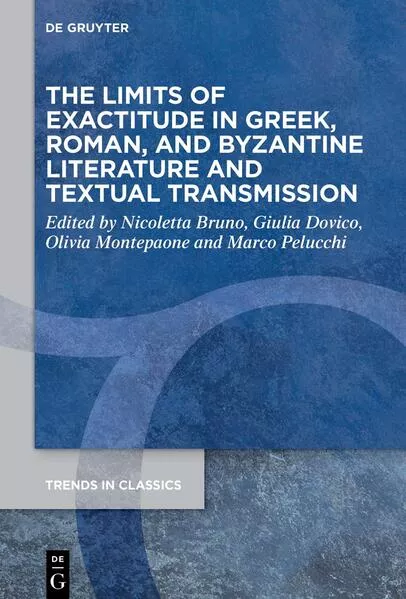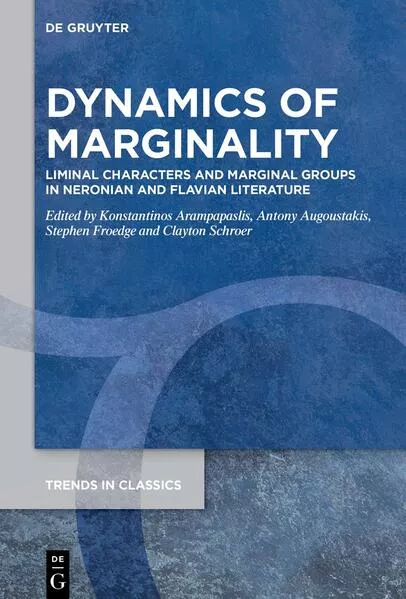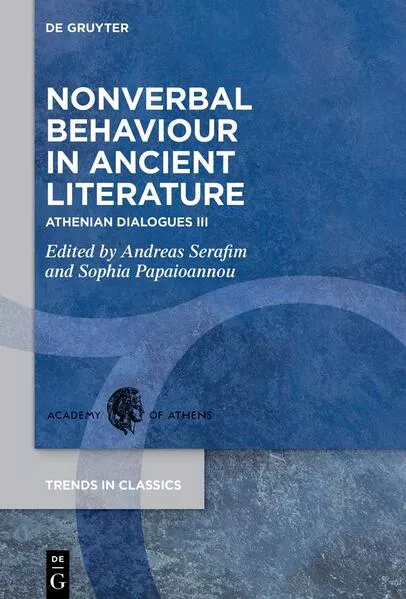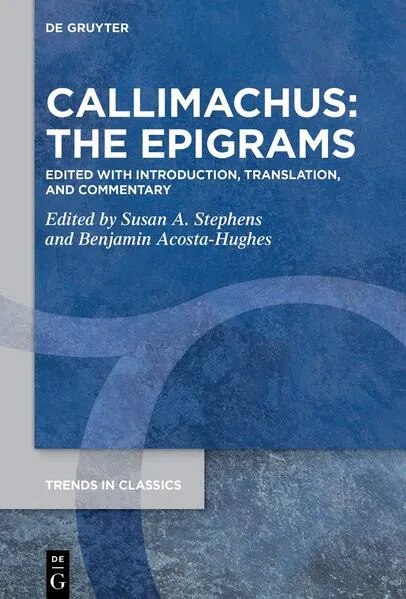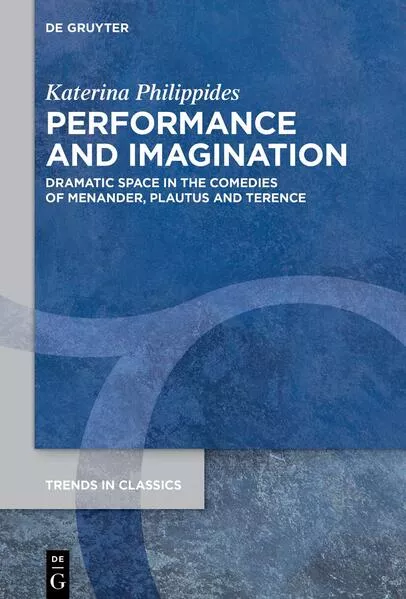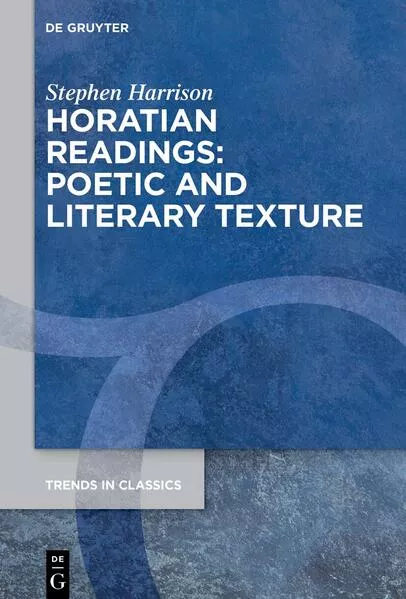Chronologie aller Bände (1 - 15)
Die Reihenfolge beginnt mit dem Buch "Constructing Gender in The Comic Mode". Wer alle Bücher der Reihe nach lesen möchte, sollte mit diesem Band von Andreas Markantonatos beginnen. Der zweite Teil der Reihe "Plautine Trends" ist am 13.10.2014 erschienen. Mit insgesamt 15 Bänden wurde die Reihe über einen Zeitraum von ungefähr 14 Jahren fortgesetzt. Der neueste Band trägt den Titel "Constructing Gender in The Comic Mode".
- Anzahl der Bewertungen für die gesamte Reihe: 2
- Ø Bewertung der Reihe: 5
- Start der Reihe: 17.11.2011
- Neueste Folge: 14.11.2025
Diese Reihenfolge enthält 14 unterschiedliche Autoren.
- Autor: Alexandrou, Margarita
- Anzahl Bewertungen: 0
- Ø Bewertung:
- Medium: Buch
- Veröffentlicht: 14.11.2025
- Genre: Roman
Constructing Gender in The Comic Mode
Gender was not theorised as such in Greco-Roman culture. Nonetheless, the concept of gender was never static or stable over the centuries—and if gender is a social construct, it is inevitably also a literary one. Ancient society and literature develop a dialectical, co-dependent dynamic in shaping and promulgating gender norms, perpetuating or challenging stereotypes. The book focuses on the construction of gender "in the comic mode", that is, in literary genres including, beyond comedy itself, iambic poetry, parody, mimiamb, epigram, satire, dialogue, even epistolography. Arguably, in terms of gender construction, the comic mode allows for a more uninhibited representation of sexuality, social roles, and stereotypical views and attitudes, using its arsenal of burlesque, grotesque, hyperbole, subversion, and standardised character types. Embracing—rather than obfuscating—the fluid nature of such fundamental concepts as "gender" and the "comic", and foregrounding their problematisation in antiquity, to the extent that such there was, the volume explores the convergences and divergences of gender construction within the "comic" canon, establishing a timeline of evolution, variation, and continuity as regards the relevant topoi. The book will be of interest to academics/students of Classics and Gender studies, as much as anyone interested in how ancient ideas of gender may have influenced modern thought.
- Band: 13
- Autor: Markantonatos, Andreas
- Anzahl Bewertungen: 1
- Ø Bewertung: 5.0
- Medium: Buch
- Veröffentlicht: 17.11.2011
- Genre: Comedy
Crisis on Stage
This volume explores the relationships between masterworks of Sophocles, Euripides and Aristophanes and critical events of Athenian history, by bringing together internationally distinguished scholars with expertise on different aspects of ancient theatre. These specialists study how tragic and comic plays composed in late fifth century BCE mirror the acute political and social crisis unfolding in Athens in the wake of the military catastrophe in 413 BCE and the oligarchic revolution in 411 BCE. With events of such magnitude the late fifth century held the potential for vast and fast cultural and intellectual change. In times of severe emergency humans gain a more conscious understanding of their historically shaped presence; this realization often has a welcome effect of offering new perspectives to tackle future challenges. Over twenty academic experts believe that the Attic theatre showed increased responsiveness to the pressing social and political issues of the day to the benefit of the polis. By regularly promoting examples of public-spirited and capable figures of authority, Greek drama provided the people of Athens with a civic understanding of their own good.
- Band: 29
- Autor: Perysinakis, Ioannis N.
- Anzahl Bewertungen: 1
- Ø Bewertung: 5.0
- Medium: Buch
- Veröffentlicht: 13.10.2014
- Genre: Comedy
Plautine Trends
Plautine Trends: Studies in Plautine Comedy and its Reception, a collective volume published as a Festschrift in honour of Prof. D. Raios (University of Ioannina), aims to contribute to the current, intense discussion on Plautine drama and engage with most of the topics which lie at the forefront of recent scholarship on ‘literary Plautus’. 13 papers by experts on Roman Comedy address issues concerning a) the structure of Plautine plot in its social, historical and philosophical contexts, b) the interfaces between language and comic plot, and c) plot and language as signs of reception. Participants include (in alphabetical order): A. Augoustakis, R.R. Caston, D.M. Christenson, M. Fontaine, S. Frangoulidis, M. Hanses, E. Karakasis, D. Konstan, K. Kounaki–Philippides, S. Papaioannou, A. Sharrock, N.W. Slater, and J.T. Welsh. The papers of the volume are preceded by an introduction offering a review of the extensive literature on the subject in recent years and setting the volume in its critical context. The preface to the volume is written by R.L. Hunter. The book is intended for students or scholars working on or interested in Plautine Comedy and its reception.
- Band: 118
- Autor: Gramps, Adrian
- Anzahl Bewertungen: 0
- Ø Bewertung:
- Medium: Buch
- Veröffentlicht: 08.05.2023
- Genre: Roman
The Fiction of Occasion in Hellenistic and Roman Poetry
The aim of this book is to devise a method for approaching the problem of presence in Hellenistic and Roman poetry. The problem of presence, as defined here, is the problem of the availability or accessibility to the reader of the fictional worlds disclosed by poetry. From Callimachus’ Hymns to the Odes of Horace, poets of this era repeatedly challenge readers by beckoning them to explore fictive spaces which are at once familiar and otherworldly, realms of the imagination which are nevertheless firmly rooted in the lived reality of the poets and their contemporaries. We too, when we read these poems, may feel simultaneously a sense of being transported to a world apart and of being seized upon by the poem’s address in the here and now of reading. The fiction of occasion is proposed as a new conceptual tool for understanding how these poems produce such problematic presences and what varieties of experience they make possible for their readers. The fiction of occasion is defined as a phenomenon whereby a poem is fictionally framed as part of a material event or ‘occasion’ with which the reader is invited to engage through the medium of the senses. The book explores this concept through close readings of key authors from the corpus of first-person poetry written in Greek and Latin between the 3rd century BCE and the 1st century CE, with a focus on Callimachus, Bion, Catullus, Propertius, and Horace. The ultimate purpose of these readings is to move towards developing a new vocabulary for conceptualising ancient poetry as an embodied experience.
- Band: 119
- Autor: Mawford, Katharine
- Anzahl Bewertungen: 0
- Ø Bewertung:
- Medium: Buch
- Veröffentlicht: 08.05.2023
- Genre: Roman
Ancient Memory
Although the recent ‘memory boom’ has led to increasing interdisciplinary interest, there is a significant gap relating to the examination of this topic in Classics. In particular, there is need for a systematic exploration of ancient memory and its use as a critical and methodological tool for delving into ancient literature.
The present volume provides just such an approach, theorising the use and role of memory in Graeco-Roman thought and literature, and building on the background of memory studies. The volume’s contributors apply theoretical models such as memoryscapes, civic and cultural memory, and memory loss to a range of authors, from Homeric epic to Senecan drama, and from historiography to Cicero’s recollections of performances. The chapters are divided into four sections according to the main perspective taken. These are: 1) the Mechanics of Memory, 2) Collective memory, 3) Female Memory, and 4) Oblivion.
This modern approach to ancient memory will be useful for scholars working across the range of Greek and Roman literature, as well as for students, and a broader interdisciplinary audience interested in the intersection of memory studies and Classics.
- Band: 121
- Autor: Papaioannou, Sophia
- Anzahl Bewertungen: 0
- Ø Bewertung:
- Medium: Buch
- Veröffentlicht: 08.05.2023
- Genre: Roman
Comic Invective in Ancient Greek and Roman Oratory
This volume acknowledges the centrality of comic invective in a range of oratorical institutions (especially forensic and symbouleutic), and aspires to enhance the knowledge and understanding of how this technique is used in such con-texts of both Greek and Roman oratory. Despite the important scholarly work that has been done in discussing the patterns of using invective in Greek and Roman texts and contexts, there are still notable gaps in our knowledge of the issue. The introduction to, and the twelve chapters of, this volume address some understudied multi-genre and interdisciplinary topics: first, the ways in which comic invective in oratory draws on, or has implications for, comedy and other genres, or how these literary genres are influenced by oratorical theory and practice, and by contemporary socio-political circumstances, in articulating comic invective and targeting prominent individuals; second, how comic invective sustains relationships and promotes persuasion through unity and division; third, how it connects with sexuality, the human body and male/female physiology; fourth, what impact generic dichotomies, as, for example, public-private and defence-prosecution, may have upon using comic invective; and fifth, what the limitations in its use are, depending on the codes of honour and decency in ancient Greece and Rome.
- Band: 126
- Autor: Serafim, Andreas
- Anzahl Bewertungen: 0
- Ø Bewertung:
- Medium: Buch
- Veröffentlicht: 23.05.2022
- Genre: Roman
Sex and the Ancient City
This volume aims to revisit, further explore and tease out the textual, but also non-textual sources in an attempt to reconstruct a clearer picture of a particular aspect of sexuality, i.e. sexual practices, in Greco-Roman antiquity. Sexual practices refers to a part of the overarching notion of sexuality: specifically, the acts of sexual intercourse, the erogenous capacities and genital functions of male and female body, and any other physical or biological actions that define one’s sexual identity or orientation. This volume aims to approach not simply the acts of sexual intercourse themselves, but also their legal, social, political, religious, medical, cultural/moral and interdisciplinary (e.g. emotional, performative) perspectives, as manifested in a range of both textual and non-textual evidence (i.e. architecture, iconography, epigraphy, etc.). The insights taken from the contributions to this volume would enable researchers across a range of disciplines – e.g. sex/gender studies, comparative literature, psychology and cognitive neuroscience – to use theoretical perspectives, methodologies and conceptual tools to frame the sprawling examination of aspects of sexuality in broad terms, or sexual practices in particular.
- Band: 137
- Autor: Bruno, Nicoletta
- Anzahl Bewertungen: 0
- Ø Bewertung:
- Medium: Buch
- Veröffentlicht: 07.11.2022
- Genre: Roman
The Limits of Exactitude in Greek, Roman, and Byzantine Literature and Textual Transmission
The eighteen essays in this interdisciplinary volume show how ancient and medieval authors have been dealing with the problem of exactitude vs. inexactitude and have been able to exploit the ambiguities related to these two concepts to various ends. The articles focus on rhetoric and historiography (section I), exact sciences and technical disciplines (II), the peculiarity of quotations (III), cases of programmatic inexactitude (IV) and textual transmission (V). Several interconnected questions weave a net across the volume: to what extent is exactitude the goal in ancient and medieval texts? How can the concepts of accuracy and inaccuracy aid the reinterpretation of an already known text or fact? To what extent can certain definitions of exactitude be stretched, without turning into inexactitude?
The volume presents an extensive study capable of highlighting the shrewdness and aptness of the concepts introduced by Calvino more than thirty years ago.
- Band: 143
- Autor: Arampapaslis, Konstantinos
- Anzahl Bewertungen: 0
- Ø Bewertung:
- Medium: Buch
- Veröffentlicht: 14.05.2023
- Genre: Roman
Dynamics Of Marginality
This volume explores the theme of marginality in the literature and history of the Neronian and Flavian periods. As a concept of modern criticism, the term marginality has been applied to the connection between the uprooted experience of immigrant communities and the subsequent diasporas these groups formed in their new homes. The concept also covers individuals or groups who were barred from access to resources and equal opportunities based on their deviation from a "normal" or dominant culture or ideology. From a literary vantage point, we are interested in the voices of "marginal," or underappreciated authors and critical voices. The distinction between marginalia and "the" text is often nebulous, with marginal comments making their way into the paradosis and being regarded, in modern criticism, as important sources of information in their own right. The analysis of relevant passages from various authors including Lucan, Petronius, Persius, Philo of Alexandria, Pliny the Elder, Silius Italicus, and Statius, as well as the Moretum of the Appendix Vergiliana is vital for our understanding of the treatment of marginalized people in various literary genres in relation to each one’s different purposes.
- Band: 154
- Autor: Apostolakis, Kostas E.
- Anzahl Bewertungen: 0
- Ø Bewertung:
- Medium: Buch
- Veröffentlicht: 06.05.2024
- Genre: Comedy
The Play of Language in Ancient Greek Comedy
- Band: 155
- Autor: Serafim, Andreas
- Anzahl Bewertungen: 0
- Ø Bewertung:
- Medium: Buch
- Veröffentlicht: 31.12.2023
- Genre: Roman
Nonverbal Behaviour in Ancient Literature
The volume offers an up-to-date and nuanced study of a multi-thematic topic, expressions of which can be found abundantly in ancient Greek and Latin literature: nonverbal behaviour, i.e., vocalics, kinesics, proxemics, haptics, and chronemics. The individual chapters explore texts from Homer to the 4th century AD to discuss aspects of nonverbal behaviour and how these are linked to, reflect upon, and are informed by general cultural frameworks in ancient Greece and Rome. Material sources are also examined to enhance our knowledge and understanding of the texts.
- Band: 156
- Autor: Brecke, Iris
- Anzahl Bewertungen: 0
- Ø Bewertung:
- Medium: Buch
- Veröffentlicht: 20.11.2023
- Genre: Comedy
Ovid’s Terence
This book investigates the complex reception of Terence in Ovid and a number of allusions to the Terentian comedies in the love elegies and the exilic elegiac epistle Tristia 2. The genres of Latin love elegy and New Comedy are often seen as closely connected in research, and one leading view is that Latin love elegy to a large degree springs out of the comic genre. However, though both genres are strongly rooted in social practise and presents interpersonal relationships in a non-mythological, everyday setting, there are also major differences between them. Marriage, for instance, is the conventional goal for the young lover withing the comic genre, whereas the elegiac lover should avoid it. Taking into account both the similarities and the crucial differences between the comic genre and Latin love elegy, and key elegiac topoi such as seruitium amoris and militia amoris, this book demonstrates an intricate connection between Ovid and Terence, and a complex nexus of allusions that goes straight to the core of Ovid’s elegiac authorship.
Winner of the Trends in Classics Book Prize 2023
- Band: 174
- Autor: Stephens, Susan A.
- Anzahl Bewertungen: 0
- Ø Bewertung:
- Medium: Buch
- Veröffentlicht: 14.10.2025
- Genre: Sonstiges
Callimachus: The Epigrams
- Band: 186
- Autor: Philippides, Katerina
- Anzahl Bewertungen: 0
- Ø Bewertung:
- Medium: Buch
- Veröffentlicht: 21.04.2025
- Genre: Comedy
Performance and Imagination
This is an original study of the notion of space in surviving New Comedy plays by Menander, Plautus and Terence, informed by theoretical discussion on its specific categories. The main focus is on scenic space (what the audience sees) and extra-scenic space (what they imagine), with additional consideration of stage space (where the actors perform); these space distinctions permeate the book. There are illustrative examples of the use of the stage door, performed interior scenes, audible-off-stage events, speaking back into the house or gate-keeper scenes, scenes of distant and remembered space, deathbed scenes, and proxemics (characters’ movements on stage). The second half of the book discusses places of isolation, places characters return to, metatheatrical space, men’s and women’s space, imaginary space, etc. The primary interest lies in interpreting dramatic texts as texts that contain their own performability. New insights and solutions are frequently proposed regarding long-debated issues of stage action. One conclusion to emerge is that rather than hindering playwrights, the austere set of New Comedy succeeds in rendering a vibrant world replete with the multifarious manifestations of public and private life.
- Band: 189
- Autor: Harrison, Stephen
- Anzahl Bewertungen: 0
- Ø Bewertung:
- Medium: Buch
- Veröffentlicht: 02.06.2025
- Genre: Politik
Horatian Readings: Poetic and Literary Texture
This volume collects eighteen pieces on Horace written over the last two decades. They share a common interest in the close reading of Horace’s poems, especially of the Odes, and are intended to stand alongside the more formal analyses in my commentary on Odes 2 (2017) and the readings of Horatian poems in my monograph on generic enrichment (2007).
These pieces share a number of particular concerns linked to issues prominent in classical scholarship over the period: literary career criticism, intratextuality, intertextual interaction with other poets and genres, while a further topic is the perennial question of Horace’s negotiation of the major political issues of his time and the nature of his engagement with the Augustan regime. Like all the Augustan poets, Horace was writing for a Roman readership which had been sharply divided by the internecine wars of the 40s and 30s BCE, and his work can express the perspective of the defeated as well as that of the victors, just as Vergil’s does in the Aeneid. The volume emphasises the original cultural context (and readers) of the poems, and seeks to present Horace’s poetry with the apparatus needed for its modern literary study by scholars and advanced students.

